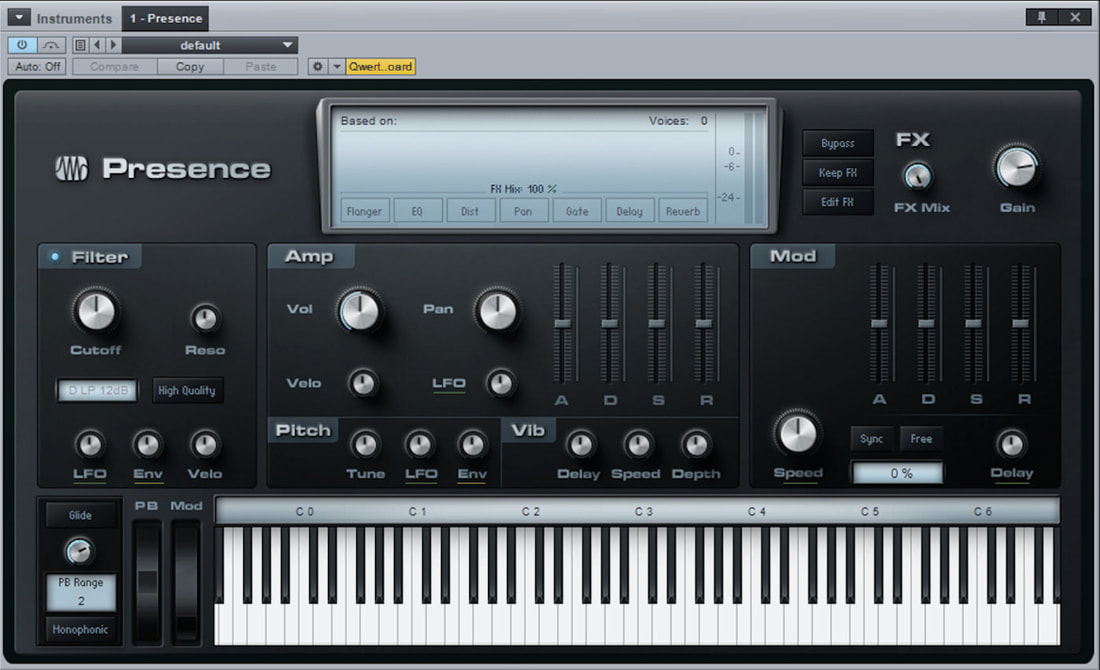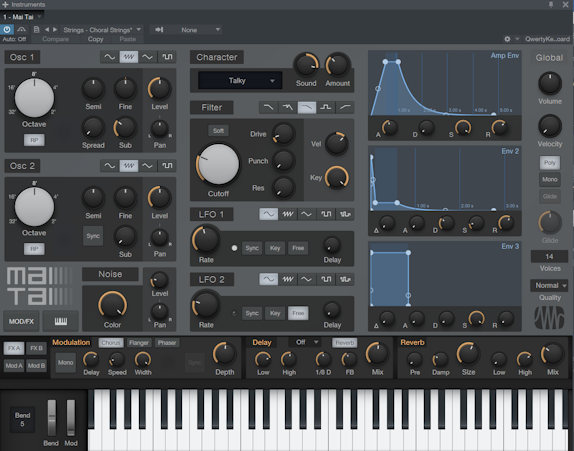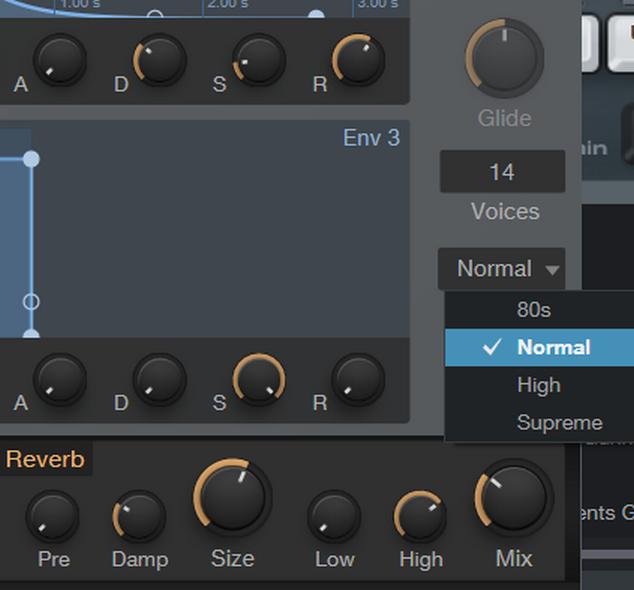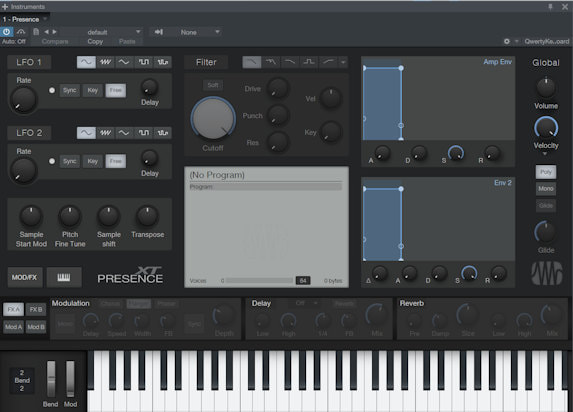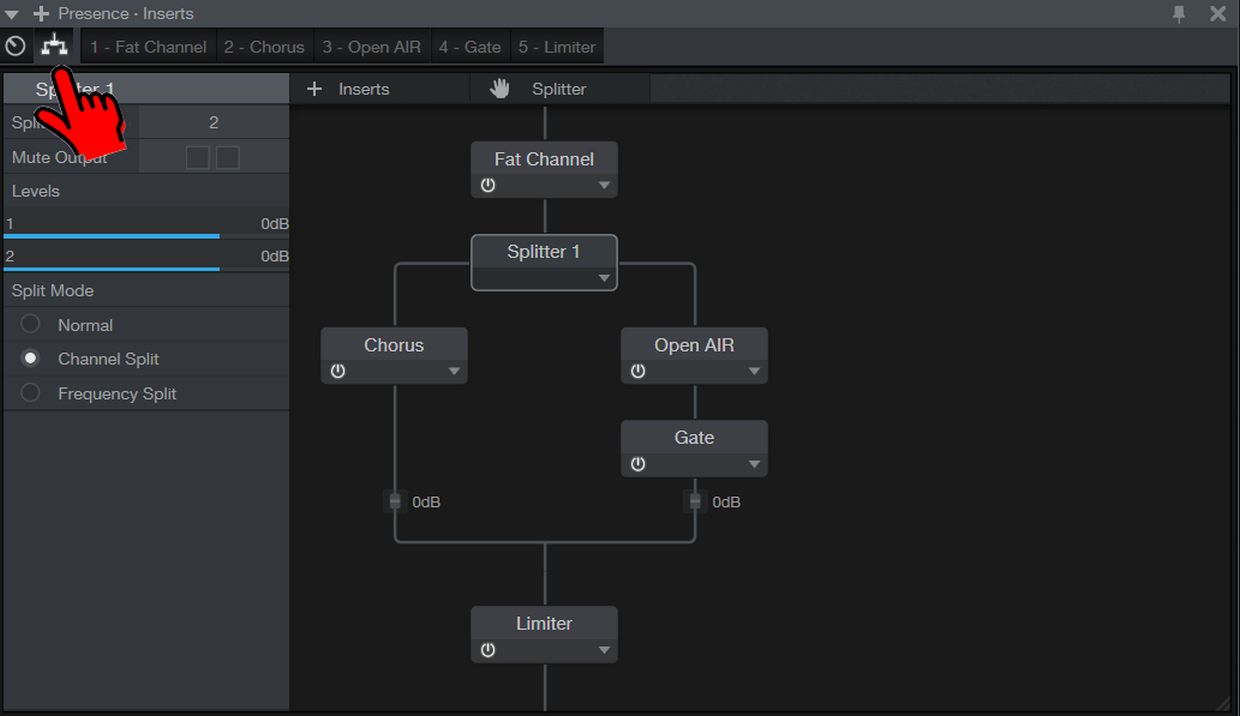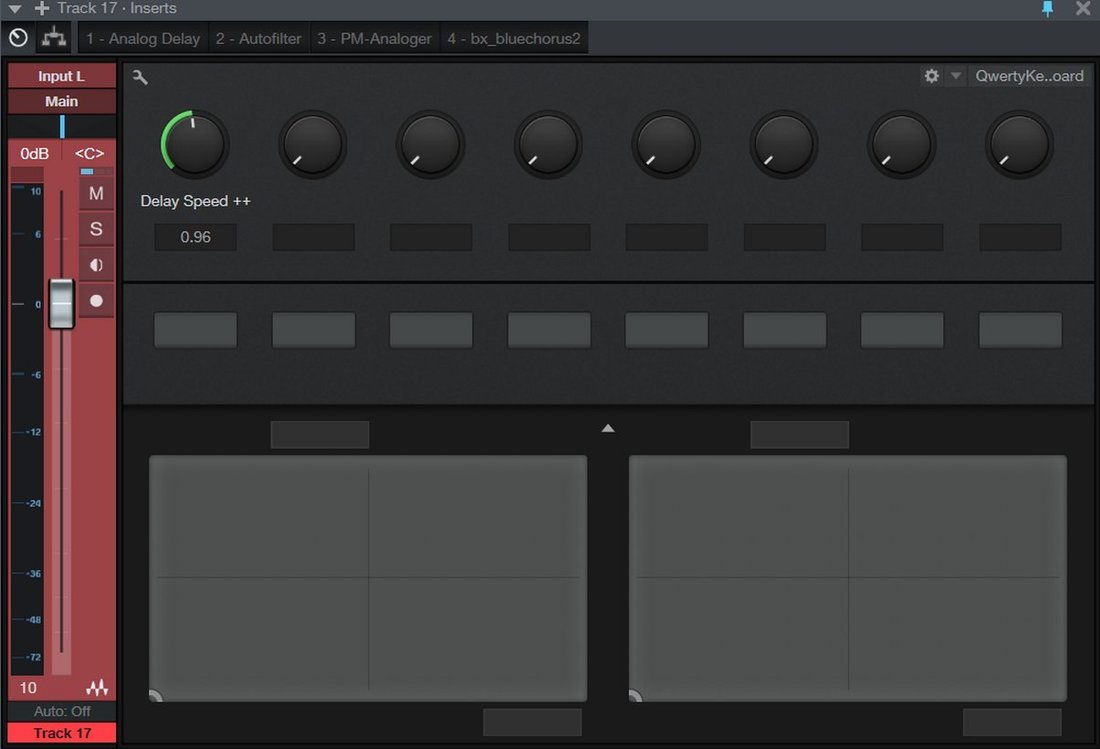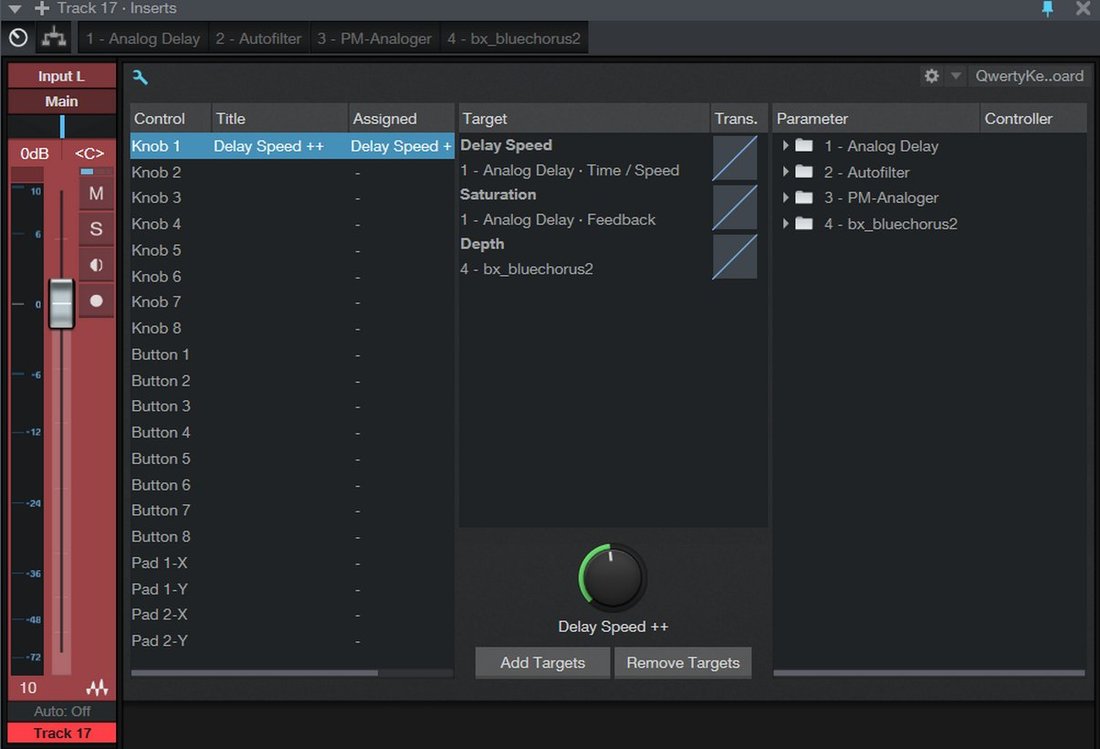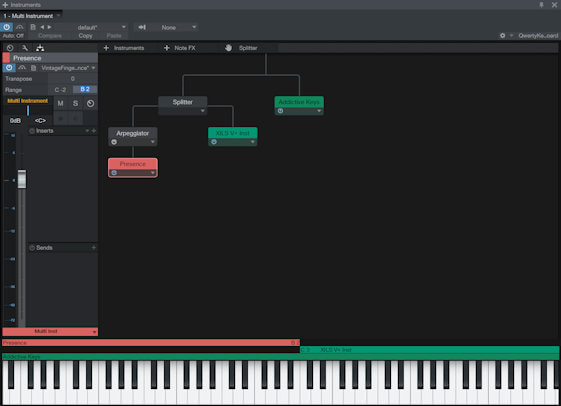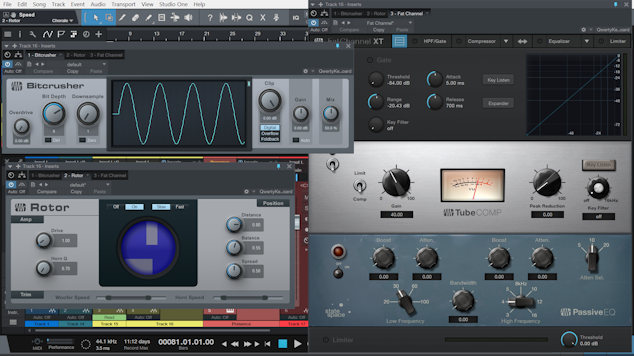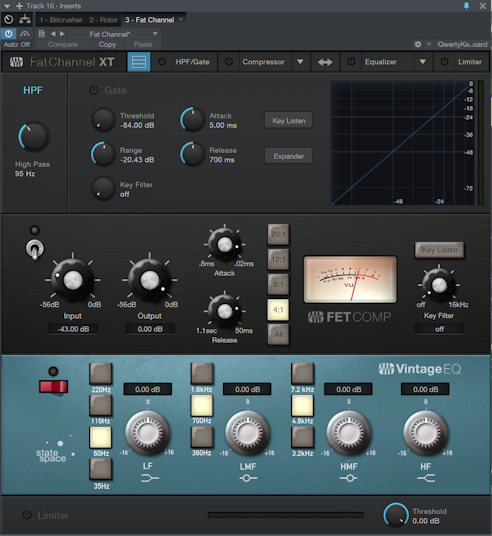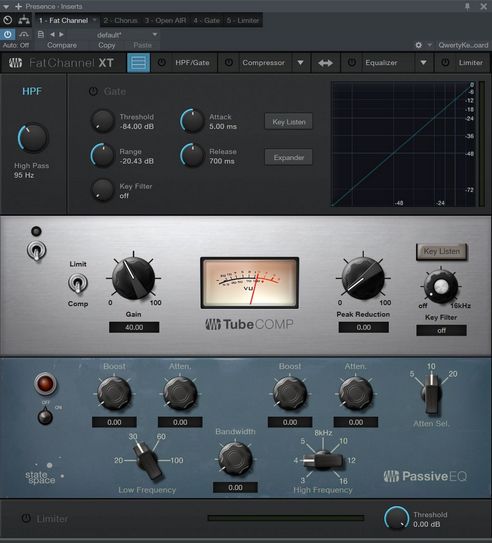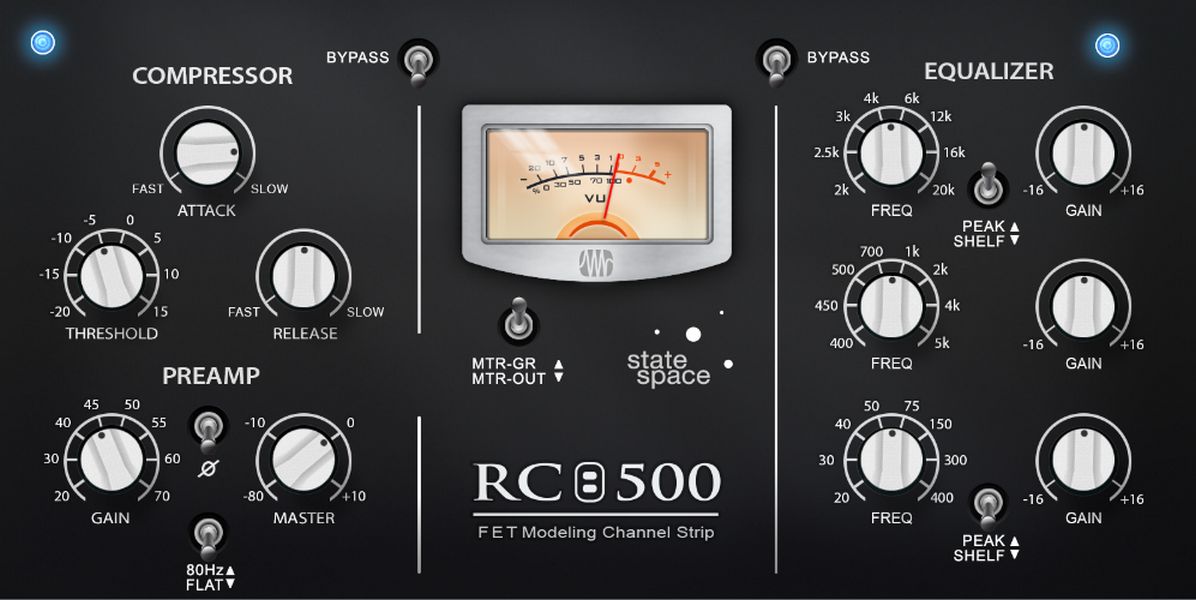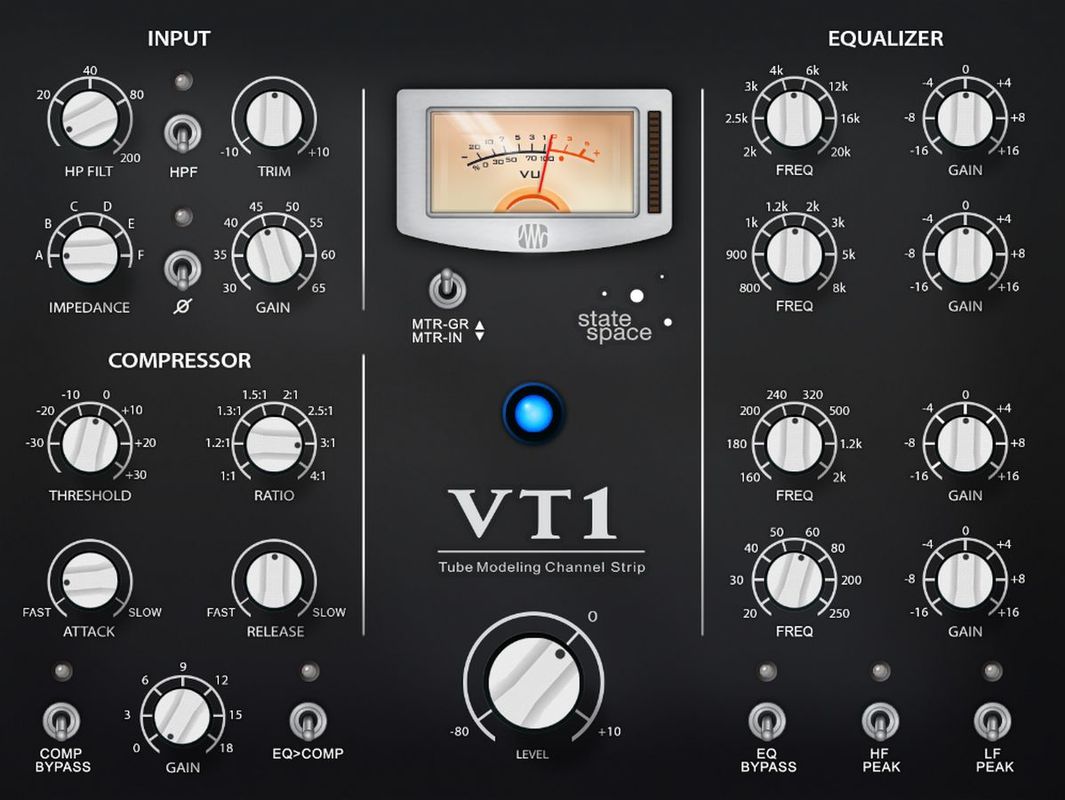|
When I first got introduced to Studio One 2.x, I was intrigued with the prospect of having a good quality, built-in sample player - complete with a full collection of nice-sounding samples. You know what I mean, right? I was holding on to that elusive dream of enjoying a well-rounded All-in-one, turnkey solution, free from the constraints of using any 3rd party vendor's "Service Center". Doh! Unfortunately it didn't turn out to be so. Studio One's "Presence" sample player, and included content, deservedly lived smack dab in the center of the land of "meh". Some of the original "Presence" samples bordered on “OK-ville”, but the majority of them never were invited by me, to take up habitation in any of my own projects. It is my honest opinion that there were much better sample-library choices available --well-entrenched formats such as “Kontakt” and/or “Sample Tank” immediately come to mind. PreSonus's response to the yawns of its disenchanted (Studio One 2.x) citizens was one of excitement and no small ballyhoo. Where once there were naught but anemic, unsatisfying trivialities, we now have good-sounding, highly usable built-in VIs; namely, “Mai Tai” soft synth and “Presence XT” sample player. Mai Tai Synth, Presence XT . . . Yes!Mai Tai:
There’s plenty of control granted for tweakers, but Mai Tai’s interface design is also simplistic enough to allow synth novices to get up and running quickly. Mai Tai shows itself fit and ready-for-duty in great style. A substantial collection of tasty, well-baked presets are in tow, spanning common categories such as Bass, Lead, Pads, Bells, Strings and so forth. An assortment of sensible “bread n’ butter” FX are at hand, accommodating both modulation and also ambience needs.
As a general statement, Mai Tai holds its own with most nearly any 3rd party soft-synth in terms of sound quality –even while set to ‘80s’ or ’Normal’. I’m particularly enamoured with its ‘Strings’ presets. Presence XT: The other new VI on the docket very worthy of mention, is PreSonus's revised, revamped and revisited sample player: "Presence". Now rechristened as, “Presence XT”, this sample player features key-switching and higher quality sampling interpolation.
Presence XT is outfitted with all the typical accoutrements that we expect to find on a decent sample player, and maybe even a couple of extras, but it doesn’t offer any type of zone scripting or sample editing. For this, PreSonus have cunningly crafted the “Presence XT Editor”; available in the PreSonus online store for an additional cost, of course ($99 usd). Still, Presence XT adds tremendous value to Studio One 3 Professional. For anyone wanting to modulate a few parameters, there is a pair of user-adjustable LFOs at hand, and the same capable modulation matrix used by “Mai Tai”. As seen on Mai Tai, a well-rounded collection of FX is included to boot. Studio One 3 Professional includes a respectable compilation of samples, slightly exceeding 14 GB in size. While the “Core XT” libraries don’t cover as much ground as say, Sample Tank 3’s default fare, or Kontakt’s factory collection, there is a valid and highly usable amount of content stuffed in. Keeping in line with Mai Tai, Presence XT’s GUI is attractive and easy to navigate. There are a good number of parameters to experiment with, and the sample sounds are quite good. You won’t find too many off world, eclectic tones, but there is an ample bevy of the most commonly reached-for instruments. If you install the complete “Core XT” collection, you’ll be rewarded with good sounding Electric Pianos, Organs, Pianos, Basses, Guitars, Percussion, Strings, Wind Instruments and Brass. Presence XT Add-ons: I’ve been blessed to snag a couple of the add-ons available for Presence XT; viz. “Presence XT Studio Grand” and “E-Instruments eBass Bundle”. Neither of these sample sets gobble up very much RAM nor CPU – a welcome diversion in these days of behemoth multi-gig sample libraries. The $79 grand piano library compares very favourably against many higher priced Kontakt libraries. It offers plenty of velocity layers for convincing “lifelike” performances while producing clear, rich tonality. In conjunction with its 10 normal velocity layers, “Grand Piano XT” also boasts 8 layers of round robin samples. Additionally, authentic pedal noises, sustain pedal resonances, and note-off samples are intelligently scripted in as well. The eBass bundle is an absolute keeper, for me. Trusty Fender P-Bass sounds are at one’s fingertips here (pun intended). Gliss notes, slides, and fret noises are all present and accounted for. The eBass bundle is comprised of four distinct sample sets: Classic Finger, Classic Pick, Vintage Finger and Vintage Pick. As well they should, each variation sounds distinct from its fellows. Personally, I prefer the “Vintage” sets for their affability towards Motown, R&B, Classic Rock, Jazz and Gospel projects. The “Classic” presets feature that unmistakable P-Bass growl; delivering even, balanced tones. This makes sense owing to the Vintage sets being sourced from basses strung with flat-wound strings, and the Classic capturing the power of bright, punchy round-wound strings. One quibble that I have concerning the eBass bundle is the lack of a multi-lib with the ability to switch between pick and finger à la keyswitches. Be that as it may, these bass guitar samples sound very good. Keeping in mind that the eBass bundle rings the till at only $99 (usd), or $40 bucks for each variant individually, you get convincing P-Bass sounds for a relatively small entry fee. Studio One 3 Professional furnishes a producer with other elemental instruments as well. As I’ve already briefly mentioned, there is the original “Mojito”; mono-synth, “Impact”; a rudimentary, well rounded drum machine, and PreSonus’s original “Sample One”; a very simple drag-n-drop sample player. These all bear a fairly “plain Jane” interface and could never be accused of being the most powerful, jaw-dropping performers, but they certainly are adequate in their respective roles. Studio One 3 Professional also offers a gratuitous collection of good quality loops and drum samples. Within the assortment you’ll find tantalizing titles from “9 Volt Guitars”, “Ubershall”, “MVP”, “Big Fish Audio” and “Sample Magic”. Speeding Along on a New Route:Version 2 of Studio One brought “FX Chains” into play – making it possible to conveniently save a channel’s complete chain of effects and FX settings. This was absolutely golden for those times when you felt that a particular FX Chain would best suit another channel, or even another project. It was definitely a forward thinking and satisfying development, yes? Studio One 3 introduced a powerful new feature-set that launched it into heretofore unheard of territory – FX routing! This Extended FX Chains feature facilitates complex effects routing in series, parallel, or a hybrid of the two. Taking things a step or two further, you can even add splits by frequency and/or by channel. Within the FX Routing Manager you can create as many channel and/or frequency splits as you would ever need. The creative potential here can actually become mind boggling. In practice, you're free to add different modulation FX, compression, gating, reverberation, delay, and etcetera, on multiple frequency bands -- without resorting to a 3rd party tool like Blue Cat’s “MB-7”. Bear in mind though, that all splits are instantiated in a cascading manner; preventing multiple splits on a single “line”. Accomplishing parallel processing feats, such as commonly practiced with compressors and saturators, is now easier than ever. Thanks to the FX Routing and Extended FX Chaining interwoven throughout Studio One 3, you can use *any effects plug-in for these purposes. Yesteryear, if an engineer wanted to employ parallel processing, he had to either wrangle up additional channel bussing or manually copy tracks –afterward processing the new bus or copied track with his processor of choice. Things got easier once plug-in developers started implementing ‘Wet/Dry’ knobs into their plug-ins. However, not every developer does so – not even in year 2017. If, like me, you tend to favour certain plug-ins for specific tasks, but those plug-ins don’t facilitate on-board parallel processing, Studio One’s “Channel Splitting” is absolutely invaluable.
Completing the FX Chains feature set nicely is a row of eight "Macro" controls. A user is free to assign most nearly any FX parameter to one (or more than one) marcro knob. These, of course, all being actionable within automation lanes. Studio One's native effects are the speediest to assign to a macro; simply right click on one of the plug-in's controls and choose a macro destination. Setting up macros for 3rd party plug-ins requires you to open the macro editor and drill down through the list of available functions instantiated on the channel. Multi-Instruments: The advanced routing functionality built into “Studio One 3” doesn't end with its effects chains --there's more! Now we have a Multi-Instruments element to explore; expanding creative possibilities tremendously while opening up a cacophony of (practically) limitless sonic layers.
The Multi-Instrument feature is not limited to PreSonus’s VIs only; you can combine native and 3rd party instruments to your heart’s content (or until your CPU and/or memory starts to cough and sputter). Effects can be freely added as insert FX for each instrument individually. Keyboard splits are easily created by limiting the layered instruments’ playable ranges. Macro controls are also available for quickly manipulating instrument parameters, without having to actually bring an instrument’s interface into focus. As exemplified by the “FX Chains”, Multi-Instrument conditions can be saved as presets. Note FX – Huh, What’s This? Note FX is a set of midi tools specific to manipulating midi note data. The toolset accords us an effective Arpeggiator, Chord Generator, Repeater, and an Input Filter. Of the four tools, I find myself using “Arpeggiator” the most often – not all soft-synths house an arpeggiator, ya know. *Grin. Yet more than that, it’s totally cool to be able to arppegiate *any virtual instrument with ease. Note FX’s arppegiator surrenders the usual Up/Down/Randomize patterns along with a 32-step sequencer. Chorder lets you trigger chords from a single note; making chord changes as easy as child’s play (er, chord play, that is). Repeater is a nifty little apparatus to have in the toolbox, due to the ease by which it allows you to create interesting and complex patterns. Sharing a strong similarity to the Arpeggiator, this one yields 32 sequencing steps as well as gating options. If that weren’t enough, Repeater makes it a breeze to pitch notes within your created patterns. As with most channel and FX items housed within Studio One 3, you’ll find any instantiated Note FX gidgetry neatly tucked away in the respective instrument’s "Inspector Panel". A Gaggle of FX . . . Plus a few Extras:
As of version 3.5, we welcome into the family “FatChannel XT”. Coming to us directly from PreSonus's magnanimous "Studio Live Series 3" consoles, FatChannel XT is a marked improvement over the original FatChannel plug-in. It can be displayed in both horizontal and vertical layouts. Additional to PreSonus's own dependable gadgets retained from the original FatChannel, this strip also divvies up a heaping helping of modelled studio staples. PreSonus now provides us with their interpretations of classic FET and Tube compressors (aka: 1176 and LA-2A?). Be aware! These are approximations, NOT 1:1 circuit modelled plug-ins. They each sound good, generally offering similar sonic characteristics and workflow to their hardware inspirations, but their controls do not directly correspond to the influencing hardware units (nor to other modelled plug-ins, for that matter). For instance, the "Tube Compressor" activates a faster attack time than a real LA-2A does. On the EQ front, we're given a Pultec EQP-1A emulation and a NEVE inspired 4-band unit. These are effective, smooth-sounding modules that do a capital job of emulating time-honored, vintage processors. If your budget is light, and your VST folder isn’t exactly overflowing with speciality 3rd party plug-ins, rest assured that good results are achievable using Studio One’s built-in, native FX. Don’t take that to mean that the native pluggies are necessarily on par with high end (read: expensive) products by Softube, Waves, Brainworx, and the like, but they are leaps and bounds better than what was available just a few years ago. PreSonus’s stock plug-ins, including the three new effects mentioned above, all share a notable virtue –extremely modest CPU demands. When I first caught wind of PreSonus’s “FatChannel XT”, I was concerned that their modelling efforts would be somewhat demanding on my CPU. I’m delighted to report that the opposite is true. Wow! If only Waves, Slate Digital, and all the other 3rd party developers, could achieve such ultra low CPU hits with their products . . . *Sigh. Before we move along, there are a couple of proprietary addon plug-ins from PreSonus that I’d like to briefly highlight -- “RC-500” and “VT1”. These are a yet another pair of modelled channel strips, bundled together in the “Channel Strip Collection”. These aren’t free for the taking, but they are available at the PreSonus online store for $79.95 (usd). Are they worth the extra coin? Yes, I feel that they are. The RC-500 is a faithful, digital rendering of PreSonus’s own hardware unit. FET-style compression and smooth, silken EQ are evidenced here. On the other hand, VT1 is a circuit modelled example of a vintage tube channel strip. It features a warm tone and gutsy, spirited compression characteristics. Both units host input gain controls, vibe-y compression and analogue-esque EQ. A convenient and sonically interesting appointment on the "VT1" is its ‘Impedence’ selector. Here, you can alter the pre amp’s tonality in 6 steps: A to G – (‘A’) sounding the warmest and (‘G’) fully uncapping high frequencies. Although these plug-ins are slightly more ambitious towards your CPU than the stock Studio One FX, they can both still be considered quite light. On my Intel i7 7700, they don’t usually grab any more than 3 to 5% (apiece) of my CPU’s primary core --with “VT1” typically being the hungrier of the two. Concluding Remarks:My friends, we could detail the sundry aspects, characteristics and attributes of Studio One 3.5 over another 20 pages, or more, and still not get a glimpse of everything that it has to offer. We have, however, focused on its standout features and peered quite deeply into it's immense productivity toolset. Here are my findings in a nutshell:
Not only is Studio One Pro chock-full of impressive tools and features, it boasts a very high quality (64 bit float) audio engine. I know, I know . . . "null tests . . . all digital rendering sounds the same . . . yadda, yadda". Still, my ears tell me that projects rendered in Studio One Pro 3.x sound GREAT! I mean, really, really great. Correct stereo imaging is retained, good quality (automatic) dithering and resampling is in play, and accurate mixdown is very much the norm for Studio One Pro users. Studio One is VST3 Friendly: It's not surprising that Studio One® cooperates extremely well with the VST3 standard; considering that one of it's authors was instrumental in creating the VST3 format in the first place. Within my Windows VST3 folder you can find processors developed by Softube, Waves, Antares, FabFilter, Arturia, and others. The plug-ins all function well for me in Studio One 3.5 without weird glitches, freezes or crashes. I can't say that I enjoy the same kind of trouble-free experience in other DAWs . . . Jus Sayin'. ARA Support = Melodyne: Please be gentle with your correction if I'm mistaken about this, but wasn't Studio One® the first DAW to tightly integrate inline, native "Melodyne" ARA (Audio Random Access)? Inasmuch as other developers are scrambling to catch up to PreSonus in this regard, Studio One 3.5 absolutely rockz first place in the winner's circle with its highly developed ARA synergism. Go on, I dare ya . . . check out the Samplitude, Cakewalk, Mixcraft, and etcetera, forums --you'll see posts a-plenty about (integrated) ARA woes. I'm not so naive as to not think that Studio One® never has a problem with Melodyne, but it certainly is the example-setter to this point in time. Bummer Commentary: Honestly, there really isn't much that I feel the need to negatively comment on, concerning Studio One 3 Professional. Overall, I've come to really like it's approach to most nearly everything related to audio production. However, I would like to see the next iteration of S1 implement more refined midi editing capabilities. As it stands at present, I find midi manipulation a little bit cumbersome in Studio One. It would be beneficial for those of us who do a lot of midi recording, if a single virtual instrument track could contain multiple midi lanes, and if midi notes were not constrained to a single midi channel, per track. To clarify further, imagine having an instance of VB3 or GG-Audio's "BLue3" loaded up on a midi track. Each of those Hammond organ VIs can utilize three separate midi paths; one for the upper manual, another for the lower manual, and lastly, one for the bass pedals. It would nice if a single midi track could contain midi note data for all three midi channels, instead of having to set up three separate tracks. A perfect example of a DAW (and piano roll editor) that can do this, is good ol' Mixcraft, by Acoustica. As a matter of fact, I tend to favour Mixcraft's piano roll editor over those found in most other DAWs. With the exception of my hopeful wish for enhanced midi editing, I'm very pleased with Studio One Professional 3.5. I highly recommend it. Go ahead, download a free, fully-functioning 30 day trial version and try it out for yourself. Visit the PreSonus Studio One Web Site Stay In The Loop - Subscribe Today!Brother Charles is a freelance writer, Gospel music artist and minister. Charles had been a professional touring musician during the nineties; working primarily as a lead guitarist in the Canadian country music industry. Brother Charles is also involved with music production and quality home recording.
4 Comments
Leave a Reply. |
Subscribe to the Reviewer's Revival NewsFlash for notifications of the latest REVIEWS, SALES and exclusive COUPON-CODES. CLICK HERE |

